Smart guns, like flying cars, were supposed to be here by now.

Outside of the world of James Bond and Judge Dredd, true smart guns don’t really exist yet, with one exception that we’ll cover soon.
So what’s really keeping smart guns off the shelves of American gun shops and out of the hands of American shooters?
There’s plenty of support from gun safety advocates, who see smart guns as the cure-all to the problem of gun violence. There’s also a lot of opposition from gun owners who see smart guns as a backdoor to more gun control.

But efforts by legislators to mandate smart guns into existence have backfired, making it even less likely we’ll see a real Skyfall gun on the shelves any time soon.
Gun safety advocates say smart guns could save lives. Legislators are trying to write smart guns into existence with new laws.
With all that support, what’s the state of smart gun technology in the United States today?
Smart Guns: State of the Art?
The handgrip recognition technology on James Bond’s Walther PPK in Skyfall is still at least a few years away.
The New Jersey Institute of Technology has been working on a biometric sensor that can detect a shooter’s unique grip for the last decade, although it’s still in the prototype stage.
Most smart gun technology isn’t ready for showtime, but there are lots of companies working on getting them, like the proverbial flying car, off the ground.
Dozens of entrepreneurs are working on fingerprint touchpads, RFID watches, bracelets and rings, and other ways to authenticate shooters and keep anybody but the gun’s owner from pulling the trigger.
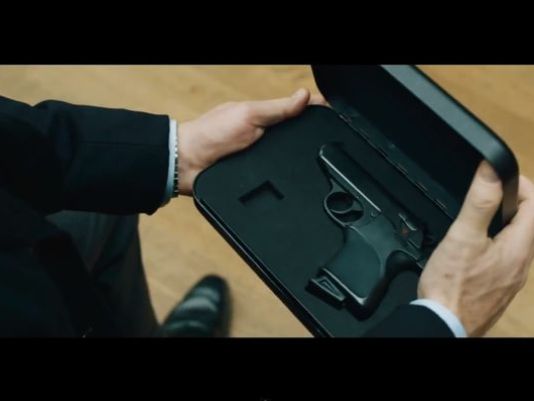
The basic technology has been around for a long time.
Jonathan Mossberg, heir to the Mossberg gunmaking empire, built an RFID ring that pairs with a gun to allow it to fire—13 years ago. Mossberg’s company, iGun Technology, even owns the trademark on the term “SmartGun.”
Mossberg’s not the only one developing smart gun technology.
Safe Gun Technology, led by Tom Lynch, has developed a fingerprint scanner retrofit that can be added to certain gun models.
Robert McNamara’s TriggerSmart has developed an add-on that prevents a gun from firing without an RFID key attached to the gun.
Kodiak Industries sells an add-on fingerprint recognition system for 1911 models, the Intelligun, for $400 per unit.
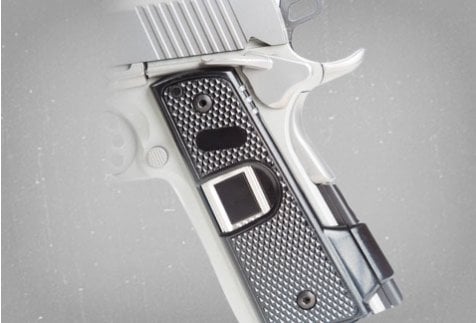
So far, however, the most advanced all-in-one “smart gun” is made by Armatix, a German company founded by legendary weapons designer Ernst Mauch.
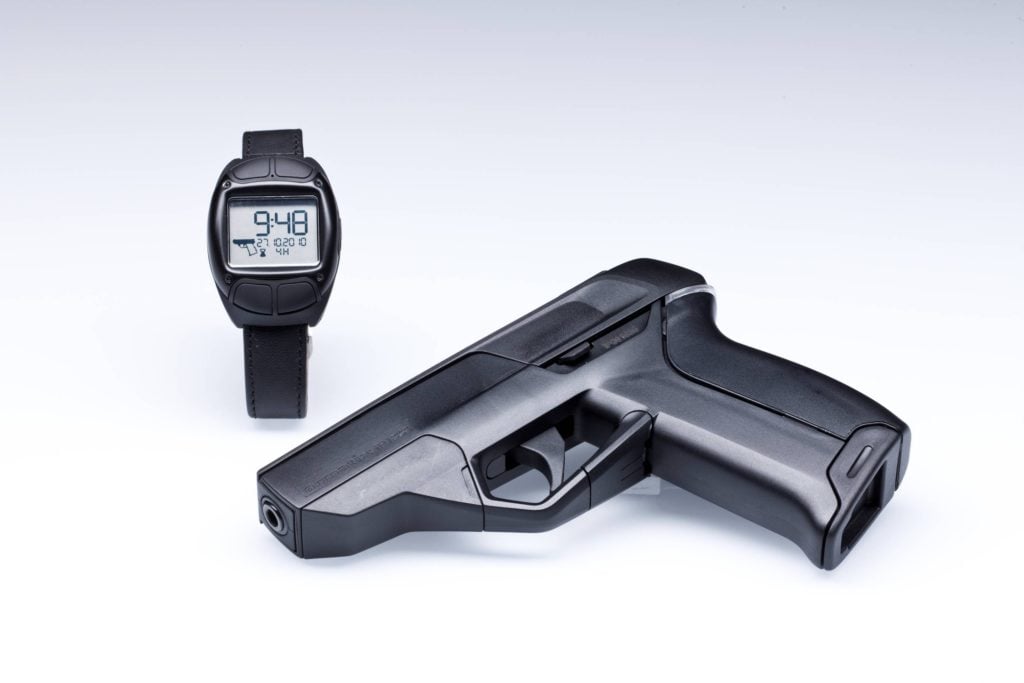
This is the guy who brought us the H&K MP5 and the HK416, the gun that killed Osama bin Laden, to name a few of the cool weapons that have come out of his workshop.
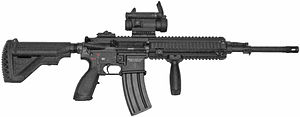
The Armatix iP1 is smart gun state of the art, but almost none have been sold in the United States thanks to an obscure New Jersey law passed in 2002.
TL;DR
Smart guns are already here, but nobody’s buying them thanks to New Jersey’s smart gun mandate.
New Jersey’s Smart Gun Mandate
In 2002, New Jersey’s legislature passed the Childproof Handgun Law, a bill introduced by state senator Loretta Weinberg.
The law states that 3 years after “personalized handguns” are available for retail sale it will be illegal for gunmakers and gun dealers to make or sell any gun that is not “smart” in the Garden State.
The law means the minute a smart gun goes on sale anywhere in the country, the clock starts ticking and New Jersey has 3 years until the mandate takes effect.
The law was dead letter until the Armatix iP1 arrived, and then the controversy really started.
When Andy Raymond started selling the Armatix iP1 out of his Maryland gun shop in the summer of 2014, he received death threats, threats to burn down his store and worse.

Some of those threats probably came from New Jersey residents worried that Raymond’s sales of the Armatix iP1 would trigger the Childproof Handgun Law and require that all guns sold in the state would have to be “smart.”
Andy Raymond quickly pulled the iP1 from his shelves, temporarily removing the threat of triggering the mandate.
In November 2014, New Jersey’s attorney general said he would not consider the iP1 as a “personalized weapon” by the terms of the law.
Later, the original sponsor of the Childproof Handgun Law, New Jersey state Senator Loretta Weinberg, said it might have to be repealed or replaced with a statute simply requiring New Jersey gun dealers to offer at least one smart gun model for sale, when they become widely available.
New Jersey’s smart gun mandate may be dead in the water, for now, but other states have tried to pass similar mandates.
California Senator Mark DeSaulnier introduced SB 293 in 2013, a bill that would have brought New Jersey’s smart gun mandate to the West Coast, if it passed. Some legislators in Congress are still trying to take it nationwide, putting an effective ban on all guns that are not “smart.”
TL;DR
State laws like New Jersey’s could legally mandate all handguns be “smart,” and that’s helping to keep them off the shelves.
The Armatix iP1
Designed by legendary gunmaker Ernst Mauch, the Armatix iP1 is the only commercially-available personalized handgun today.
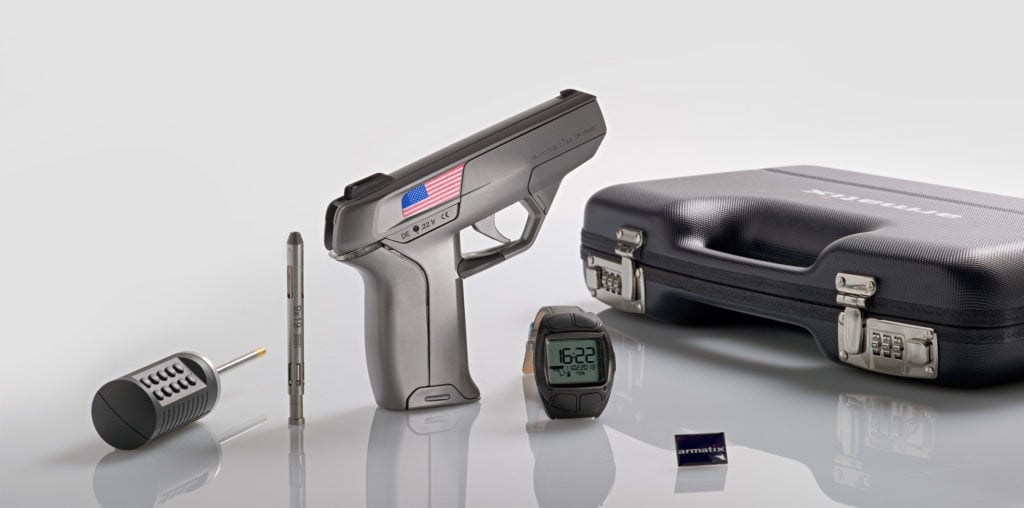
Except there’s a catch.
If you can find a store that sells it, this smart gun retails for about $1,800, about $1,400 for the gun and another $400 for the watch, an astronomical price compared to most other .22LR caliber pistols.
A review of the iP1 by the NRA magazine America’s 1st Freedom concluded that it’s probably one of the worst pistols in its caliber—ever.
Some of the reviewers’ issues with the iP1:
- It takes 20 minutes to pair the gun with the watch
- 3 to 4 misfires per 10-round magazine were common
- The double-action trigger requires more than 25lbs of pull
- The recessed hammer prevents shooters from thumbing forward
- Red means “safe” and green means “hot,” the exact opposite of firearms safety conventions
Of course, the reviewers were most concerned by the Armatix iP1’s “kill switch” functionality, which allows the gun to be completely disabled and made into a very expensive paperweight from a distance.
Who has access to the kill switch?
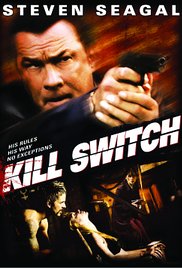
Just the manufacturers, but they could be forced to hand that over to the government, and hackers could come up with ways to shut off the weapon remotely.
Among the reviewers’ other unanswered questions:
- What happens when the batteries fail?
- How many rounds can you shoot before damaging the sensitive electronics inside the gun?
- How easy is it to hack the RFID connection between the watch and the gun?
As long as the Armatix iP1 is still the state-of-the-art, there’s not going to be a big market for smart guns anytime soon. Not because all smart guns are bad, but because the Armatix iP1 is a bad smart gun.
There’s a market for smart guns in general, but there’s not much of a market for the iP1, even ignoring the harassment and death threats that gun sellers who’ve offered the weapon have received.
A poll presented at a conference held by Washington CeaseFire found that 87% of gun owners say gun shops should be allowed to sell smartguns. And about 54% of gun owners under 45 say they’d be interested in buying one, if it worked.
A comment on /r/Guns summed up most shooters’ thoughts about smart guns pretty well: “When it works like my Sig and has been around as long as my 1911 I might be interested.”
But we may never get there, thanks to mandates being pushed at the state level and in Congress.
TL;DR
The Armatix iP1 is a bad gun, whether you love smart guns or hate them.
Handgun Trigger Safety Act of 2014
Senators Elizabeth Warren and Ed Markey (D-Mass.) introduced the Handgun Trigger Safety Act in February 2014.
If New Jersey’s mandate put gun owners off smart gun technology, the Handgun Trigger Safety Act convinced a lot of Americans that smart guns are backdoor gun control.
The Handgun Trigger Safety Act would ban the manufacture of handguns without “personalized” technology within 2 years of its passage.
Within 3 years, buying and selling handguns built before the law passed would be illegal. Handgun owners would have to send in their weapons to the manufacturer to be “retrofitted” with smart gun technology before selling them.
The law also forbids gun manufacturers from asking for compensation from gun owners to retrofit their handguns, so the costs will fall entirely on gunmakers’ shoulders.

Retrofitting tens of millions of handguns would probably bankrupt gun manufacturers, and maybe that’s the idea, although an updated version of the law says manufacturers will be reimbursed out of the DoJ’s confiscated assets fund.
Basically, the Handgun Trigger Safety Act would make New Jersey’s mandate the law of the land.
That is, if it’s ever passed by Congress, which is unlikely with pro-gun Republicans in charge, but it’s not the first time that lawmakers in Congress have tried to mandate smart gun technology.
Before the Handgun Trigger Safety Act there was the Personalized Handgun Safety Act, introduced by Massachusetts Rep. John Tierney in 2013, which would have mandated that all newly manufactured handguns be equipped with “personalized” technology within 2 years of the bill’s passage.
Both bills died in Congress, waiting for a vote that never came.
But they show the direction that many lawmakers would like to take: smart guns for all Americans, whether they like it or not.
TL;DR
Lawmakers in Congress are trying to make smart guns mandatory.
Can Smart Guns Beat The Statistics?
The pitch for smart guns is pretty straightforward: kids getting their parents’ guns and hurting themselves or others; criminals stealing guns from cops and private citizens and doing harm; thousands of senseless deaths could be prevented, at least according to the promoters of smart gun technology.
About 30,000 Americans are killed in gun-related incidents each year.
How many of those deaths could smart guns really prevent? The vast majority of gun-related deaths and injuries occur when guns are in their rightful owners’ hands, so what could smart guns really do to make people safer?
In 2010, 62 kids under 15 were accidentally killed by firearms, and another 670 teenagers used their parents’ guns to commit suicide.

According to the FBI, 45 police officers were killed in so-called “takeaway shootings,” when a suspect kills an officer with their own gun, between 2002 and 2011.
According to the National Crime Information Center, about 191,000 guns were stolen in 2013. That’s about 0.06% of all the privately owned guns in America. Smart guns that turn into paperweights in the wrong hands could prevent a lot of gun crimes.
But even if smart guns ended every gun accident, takeaway shooting and teenage suicide, that’s still only a fraction of all gun deaths in America.
TL;DR
Even universally implemented, smart guns would only prevent a tiny fraction of all gun deaths in the United States.
Ready or Not, Smart Guns Are Coming
Plenty of Americans would like to own guns but are rightfully concerned about safety.
Keeping guns in close proximity to children is dangerous, although most gun owners adhere to best practices: keeping their guns locked, unloaded and out of reach of children’s hands.
But not everyone can afford the luxury of a gun safe, and if you live in a dangerous neighborhood keeping your gun locked up all the time is not the most practical option. But…here’s our pick of the Best Bedside Safe for quick access.

Smart guns could theoretically address these concerns, and, like Andy Raymond hoped, get the “fence sitters” on “our side” of things.
Billionaire angel investor Rob Conway says he’s looking for the Facebooks, Googles and Twitters of smart gun technology.
Jonathan Mossberg thinks there’s a market for smart guns among today’s tech-savvy youth, and particularly parents. And he’s probably right.
But until there’s more consumer demand, less misguided opposition from gun rights advocates, and fewer attempts by lawmakers to legislate smart guns into existence, even the biggest gunmakers can’t afford to make the technology a reality.

If smart guns are going to pass muster with consumers, they have to be optional, affordable, and at least as reliable as our current stock of firearms. But when and if they do, they’ll have a guaranteed market in the government thanks to Obama.
In January 2016, Obama sent a memo to the DoD, DHS and the Attorney General’s office (which oversees the FBI and other federal law enforcement agencies), ordering them to regularly review the availability of smart guns and consider buying them, if appropriate.
As soon as smart guns become technically viable, the military and federal law enforcement agencies may start using them, at least on a trial basis. Seeing the Secret Service or the Marines wielding smart guns could sway a lot of skeptics.
But once smart guns are in the hands of law enforcement and the military, it could be only a matter of time before they become mandatory for all Americans.
Under product liability laws, manufacturers are required to make every product as “safe” as possible.
That means they could be sued for not making every gun a “smart gun,” once the technology is available, with or without a mandate from state legislatures or Congress.
Once smart guns arrive, they could be here to stay, whether gun owners want them or not.
Learning Resources
Beginner’s Guide to GunsThe post Smart Guns & Dumb Laws appeared first on Pew Pew Tactical.